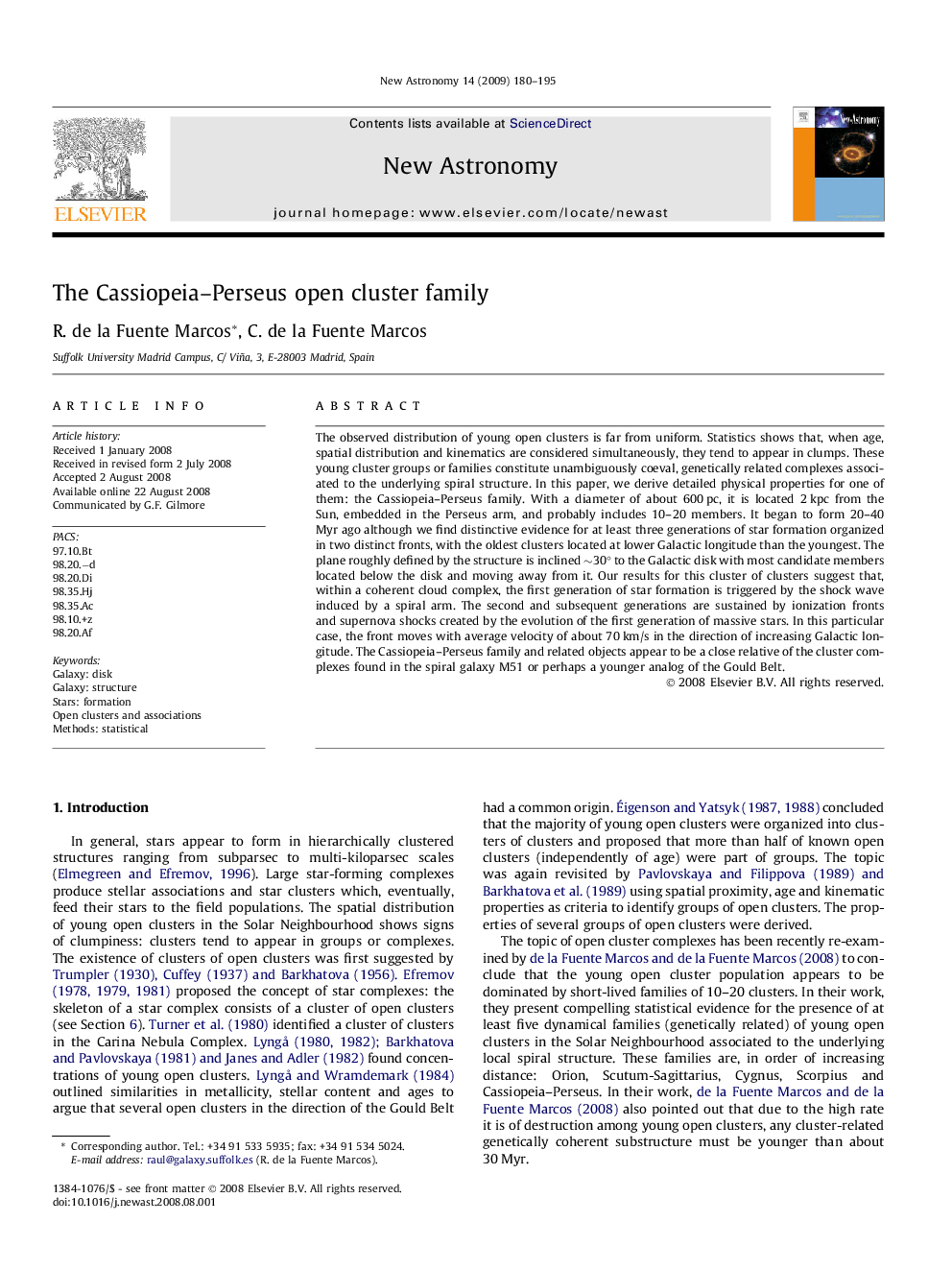| کد مقاله | کد نشریه | سال انتشار | مقاله انگلیسی | نسخه تمام متن |
|---|---|---|---|---|
| 1779834 | 1022041 | 2009 | 16 صفحه PDF | دانلود رایگان |
عنوان انگلیسی مقاله ISI
The Cassiopeia-Perseus open cluster family
دانلود مقاله + سفارش ترجمه
دانلود مقاله ISI انگلیسی
رایگان برای ایرانیان
کلمات کلیدی
موضوعات مرتبط
مهندسی و علوم پایه
فیزیک و نجوم
نجوم و فیزیک نجومی
پیش نمایش صفحه اول مقاله

چکیده انگلیسی
The observed distribution of young open clusters is far from uniform. Statistics shows that, when age, spatial distribution and kinematics are considered simultaneously, they tend to appear in clumps. These young cluster groups or families constitute unambiguously coeval, genetically related complexes associated to the underlying spiral structure. In this paper, we derive detailed physical properties for one of them: the Cassiopeia-Perseus family. With a diameter of about 600 pc, it is located 2 kpc from the Sun, embedded in the Perseus arm, and probably includes 10-20 members. It began to form 20-40 Myr ago although we find distinctive evidence for at least three generations of star formation organized in two distinct fronts, with the oldest clusters located at lower Galactic longitude than the youngest. The plane roughly defined by the structure is inclined â¼30° to the Galactic disk with most candidate members located below the disk and moving away from it. Our results for this cluster of clusters suggest that, within a coherent cloud complex, the first generation of star formation is triggered by the shock wave induced by a spiral arm. The second and subsequent generations are sustained by ionization fronts and supernova shocks created by the evolution of the first generation of massive stars. In this particular case, the front moves with average velocity of about 70 km/s in the direction of increasing Galactic longitude. The Cassiopeia-Perseus family and related objects appear to be a close relative of the cluster complexes found in the spiral galaxy M51 or perhaps a younger analog of the Gould Belt.
ناشر
Database: Elsevier - ScienceDirect (ساینس دایرکت)
Journal: New Astronomy - Volume 14, Issue 2, February 2009, Pages 180-195
Journal: New Astronomy - Volume 14, Issue 2, February 2009, Pages 180-195
نویسندگان
R. de la Fuente Marcos, C. de la Fuente Marcos,